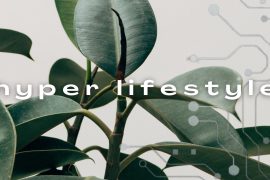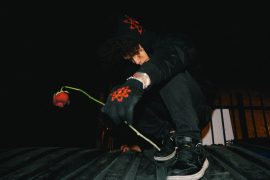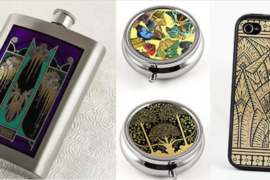Connection, sustainability, and intentionality are top priorities for local brand Mama Ochre, Gretchen Foster’s small-batch, ethically-sourced product line. It’s got everything from reusable water bottles to clothing pieces and totes that serve as the perfect reminder to skip the plastic, reading “Actually, I don’t need a bag, thank you.” She’s aiming to preserve, care and elevate for the generations to come. Eco-friendly practices are a must at every step, so Mama Ochre products are created through a slow production process that saves fabric and supplies. You can find them here in town at Lux & Ivy, where PATTERN sat down with Gretchen to talk all the Mama Ochre details.
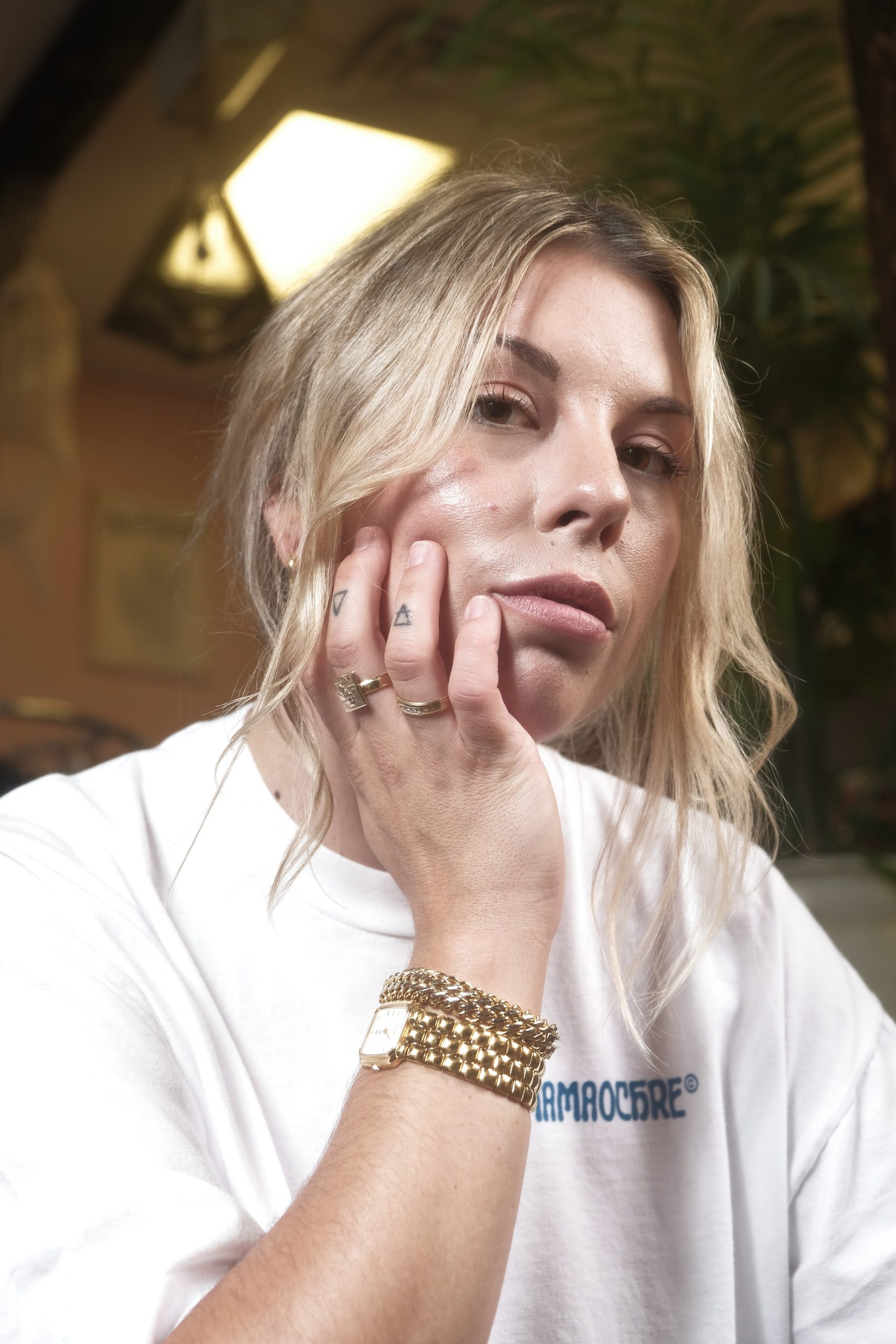
Name: Gretchen Foster
Business Name: Mama Ochre
Instagram: @mamaochre
Website: https://www.mamaochre.com/
What do you make?
I use recycled textiles to create sustainable streetwear, but I’ve also expanded that umbrella into wellness of self, each other, and the planet.
How long have you been doing this?
Three and a half years.
Retail locations where people can find your products:
Lux & Ivy (Main):
1051 E. 54th St. Suite A, Indianapolis, IN 46220
Howl and Hide:
1046 Virginia Ave., Indianapolis, IN 46203
Anngelo’s Salon and Workshop:
5719 Lawton Loop E. Dr., Indianapolis, IN 46216
Shine 29:
2019 E. 46th Street, Indianapolis, IN 46205
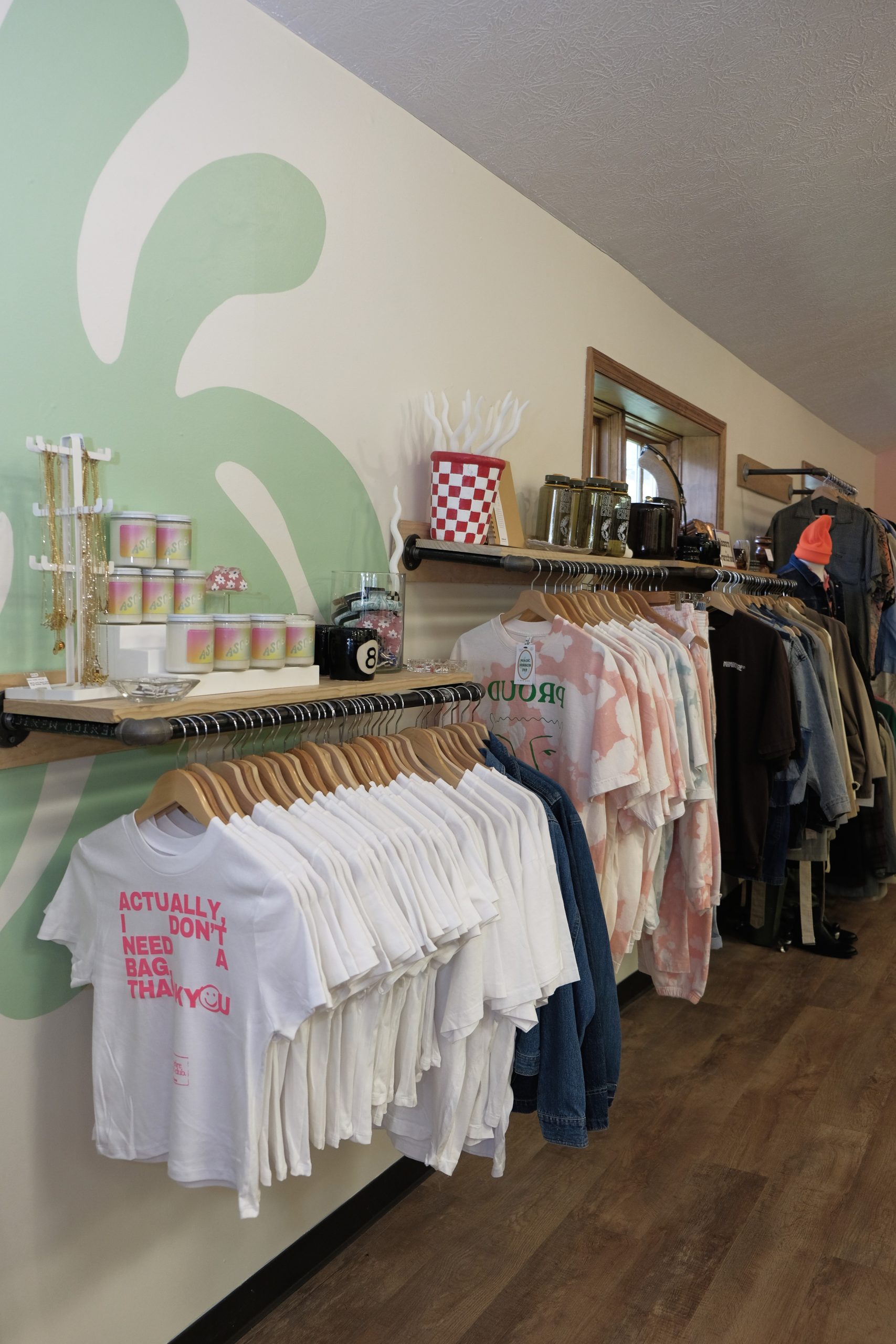
What piqued your initial interest in designing your products?
I have done it my whole life for myself and for my friends. Once I got to a point after I had my kids and I was able to switch career paths from culinary—I used to be a chef—I took that leap to make it my actual job and curate. It started with vintage, but it’s moved here.
What principles do you use when designing?
Well, it has to be aligned with me. So quality is huge. I definitely don’t want things to fall apart on people. I like minimalism with pops of color, so palettes are huge for me. I like there to be a certain vibe when you enter a space where my brand exists, whether that’s a pop-up or storefront that’s calming and grounding, but also offers that feminine and calming, balanced vibe, color-wise.
Definitely quality, aesthetic, sustainability, and in connection with the community—that’s big.
Who and/or what influences your design style? How would you describe your design aesthetics and values?
My biggest influence is travel in any context. Seeing humans existing in different landscapes and lifestyles is really inspiring to me. I’ll be on a random walk in a city away from home and something will pop into my head, especially with the design of the shirts and the phrases that are on them.
I really love Rachel Saunders. She’s a ceramicist, but she has that kind of minimal Grecian flow with pops of color and quality. I look to her as a design influence.
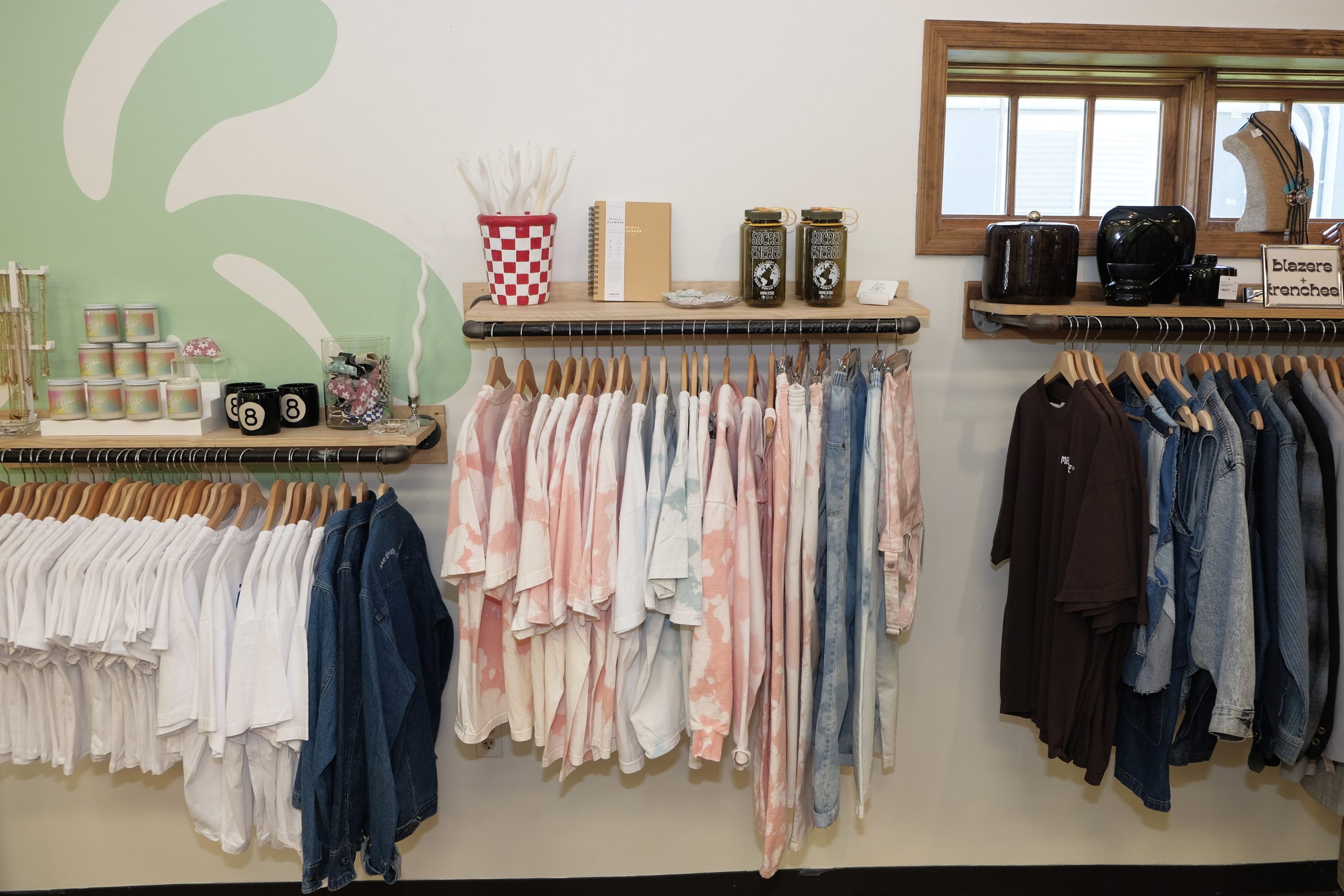
How would you describe your design aesthetic?
I would describe it as classic with a twist. I love chic. I like the unisex vibe—baggier. Besides the baby tees, my T-shirts don’t even go [below] a medium. [They go] up to 2X because I like that oversized comfortable aspect. Comfort is huge.
What comes first for you, the design materials or the design concept?
Definitely materials. I’m a projector, so the materials are the invitation. I am aware of the palettes that I want to use for certain seasons and collections, but then from there, I don’t have the design before I purchase the materials. It allows me to play with design creation once I know the products that I’m using.
Could you describe the process of creating a piece – from conception to finish?
Much of my design preparation is just in my daily life. I have an ongoing list of probably 20 pages long of different concepts and phrases that mean things to me.
When I am ready for a new collection, I’ll scroll through the list of all of these ideas I’ve had and land on one that just really resonates in that moment with me and my personal experience. A lot of the time, that translates into what’s going on collectively, so it resonates with a lot of other people and a lot of my own clients.
I will pick that phrase, and whether it’s a design illustration based on that phrase or a phrase in word format, I then feel out what that phrase means to me, the colors that triggers in my mind and then will either milk paint that—which is my hand dyed process—or create more of a simple, classic minimal design.
I do a lot of screen printing in my home studio, but I also use a local screen-printer. I design all of my own tags.
When you say milk paint—what is that?
People think that I use milk, but I don’t.
I first did the milk paint [dye] process during lockdown on accident and I loved it so much. I love the irregularity and abstract design pattern that I hadn’t seen before 2020. Now I feel like it’s a lot more places and I’m not trying to take credit, but also kind of, because I’ve never seen it before then.
It looked like spilled milk to me when I created it, so I called it milk paint, just because I thought it would be fun. It’s like my own version of trademarking it.
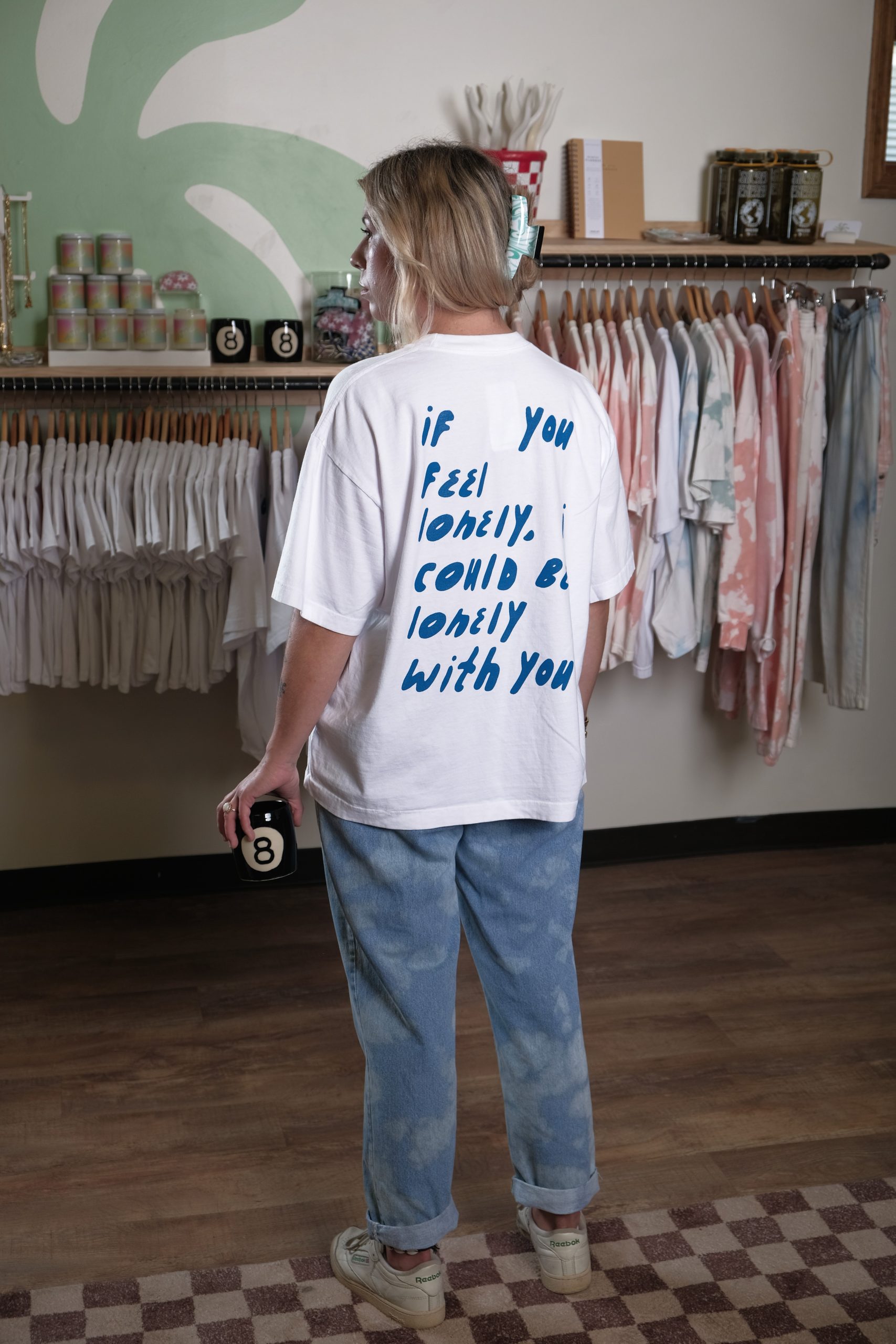
What is your favorite tool, and why?
Yeah, I think I would say music – that sounds silly, but all of the parts of the process are necessary, like a squeegee. I wouldn’t say the squeegee is my favorite tool, you know? I don’t believe that I could create in the same way without music going.
Describe a piece you’ve created that you are most proud of. What was special about it?The Magic Mirror piece was a concept that came to me when I was in a rough patch. I was in a rut and I was having low self-worth. One night I was looking in the mirror and I had to come up with something to make me keep going.
I was like, “I’m proud of you for taking care of yourself. I’m proud of you for brushing your teeth right now.” That “proud of you” concept, I just kept going. Then I was like, “look at all of these intentional items that you’ve bought to take care of yourself. I’m proud of you for making that move.” Instead of being like, “I have all of this shit and I don’t even use it”. It really did start this process of being grateful for everything around me and trying to find that silver lining and being proud of even the smallest things.
I thought it would be a really cool concept to create a design in reverse. So essentially, it’s only visible in the correct way to you in the mirror. I think it’s cool to be able to give that to a friend who might be needing that moment of encouragement. Instead of being such a blunt statement, outwardly, in a regular facing font, it’s just that moment you catch yourself in the mirror and it’s that little reminder like, “Hey, you’re doing it”.
Describe the commissioning process. What are the best and worst aspects of doing commissions?
On my website, there is a form for if you have an idea whether your existing brand or company wants a design on something dyed or undyed, we can do that. We’ve had people that have had white garments made of natural fibers that [are] stained, starting to discolor, or getting old that they’ve sent to me and I dye them for them [with] the milk paint process. Some people just give me creative control; some people are really looking for a certain style of dyeing or color palette.
Worst aspect: One time, I had a client that wanted me to dye a pinstripe linen garment that was white with blue pinstripes. They wanted me to just dye it black. It was when I first started dyeing things, and I’m like, “Oh, sure, that’ll be super easy”. Well, black is incredibly hard. And these were very nice garments from sustainable ethical companies, high dollar price points. I dyed those garments probably eight times and could not get the pinstripe out of the black. I felt so terrible and she was very understanding, but that was the only thing that I’ve ever done that I failed to produce. Since then I’ve learned to really stay within my realm of expertise. I’m not going to agree to something that I’m not confident I can provide for the customer or the client.
Best aspect: The deeper connections with people. I met this client in Chicago at a pop up market earlier this summer and we had the most amazing kismet connection. Then a couple of months later, he reached out to me on my website and said that he’s launching his first book, and he wanted me to make merch for his book launch. I think that’s cool because with human design, being a projector, those are invitations. It unlocks different parts of my creativity that go even deeper with somebody else to bounce those ideas off of; which I don’t get. I’m the owner, founder and employee of Mama Ochre, so it’s easy to just get stuck in my head about certain designs and ideas.
What advice would you give to aspiring designers like yourself?
Be as authentic to yourself as possible, even if it’s something you’ve never seen before. I think the more we get infiltrated with social media and seeing all of these different versions of humans existing and trying to emulate them, it makes us feel less than for being something we don’t see in those photos.
The more you can lean into that authentic version of you, your people will find you. You just have to trust that that’s going to happen. It might take a little while, but being yourself is the only way to success in my opinion.
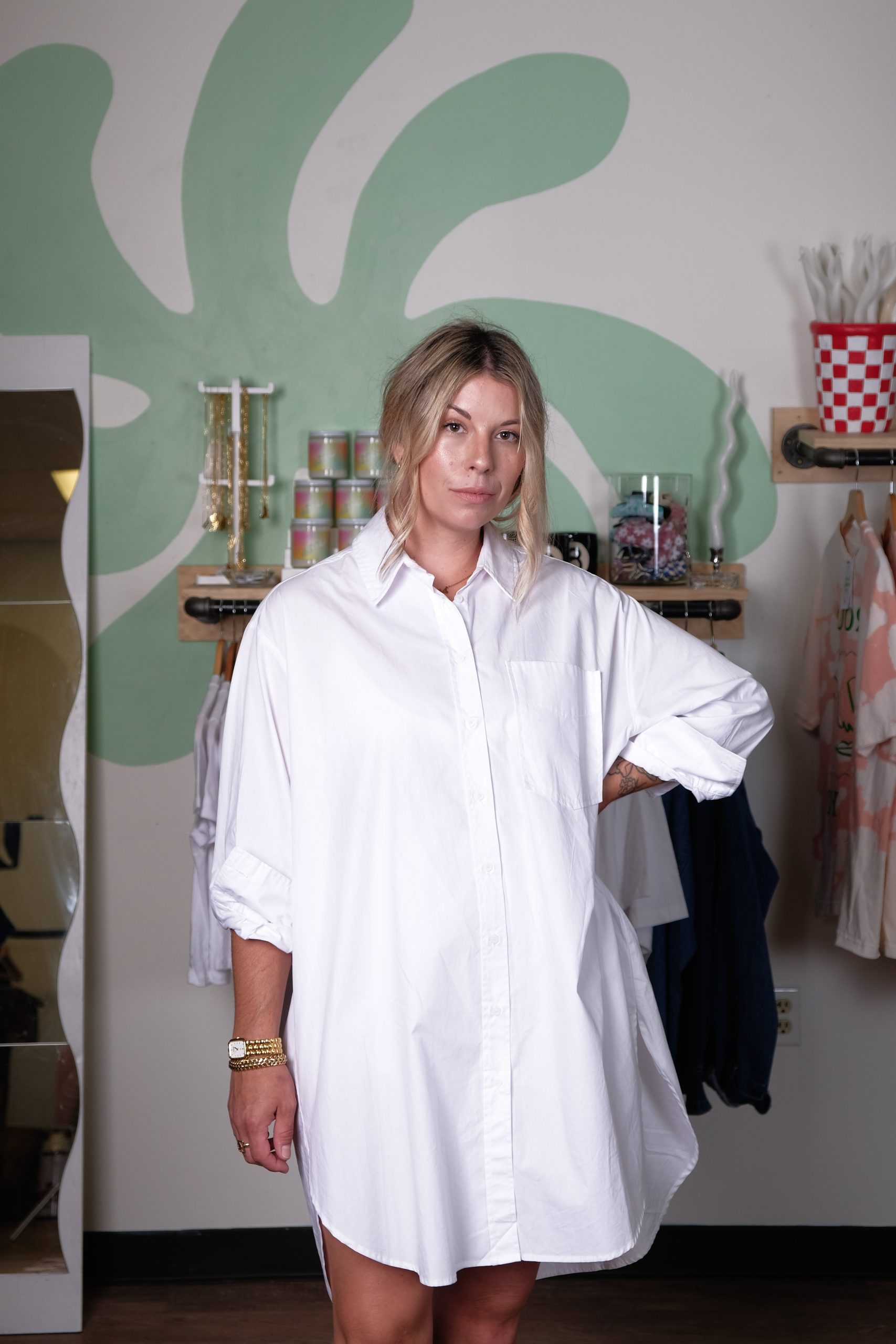
What is one thing that the creative/design community can do in Indianapolis to help grow an audience for custom or hand-crafted work?
I think that we in Indianapolis need to get more multidisciplinary in art, design and fashion. We can combine them and make more interactive shopping experiences that aren’t necessarily an outdoor pop-up market. I don’t like that part about what I do, but not having my own brick and mortar, I have to rely on those markets and it feels very salesy.
Dream commission/client?
There’s this account on Instagram called @sighswoon, and she is a writer and a meme creator. She is so influential to me spiritually and mentally. That’s the main thing I look for on Instagram. She’s also an artist and she has amazing spiritual symbolism in her art. I would love to dye a utility jumpsuit and send it to her to hand paint one of her pieces on the back.
What makes your work different from anyone else’s?
Well, I have yet to find another sustainable streetwear brand in Indy. I not only use a sustainable blanks company, but I use imperfects, which are seconds that have minor blemishes or pinholes. So even that sustainable manufacturer would put them in the landfill if they don’t sell because they’re not perfect for their customers.
I like to have that conversation with my clients and talk about how a pinhole adds character. We go to places like Urban Outfitters and we buy a T-shirt that is mechanically separated into holes because it’s a vibe. So the fact that people are deeming that blank trash because it has a tiny pinhole is crazy to me, and I love to encourage ultra sustainability in that aspect. The main thing that makes me different is that I try to be as intentional as possible where I’m sourcing my materials from.
What’s your most rewarding memory in your business?
I would say the first time I was on the news. I was very nervous. That night, I got home late, and I went to my room and went to go to bed and my daughter who’s 13 had written this letter to me. She wrote, “I’m so proud of you for everything that you’ve done with Mama Ochre. It was so cool seeing you on the TV”. She was so complimentary. She’s not often verbal like that. It was this heartfelt, beautiful handwritten note on my pillow about how 99% of people give up by this point and you are the 1% that’s never stopped.


